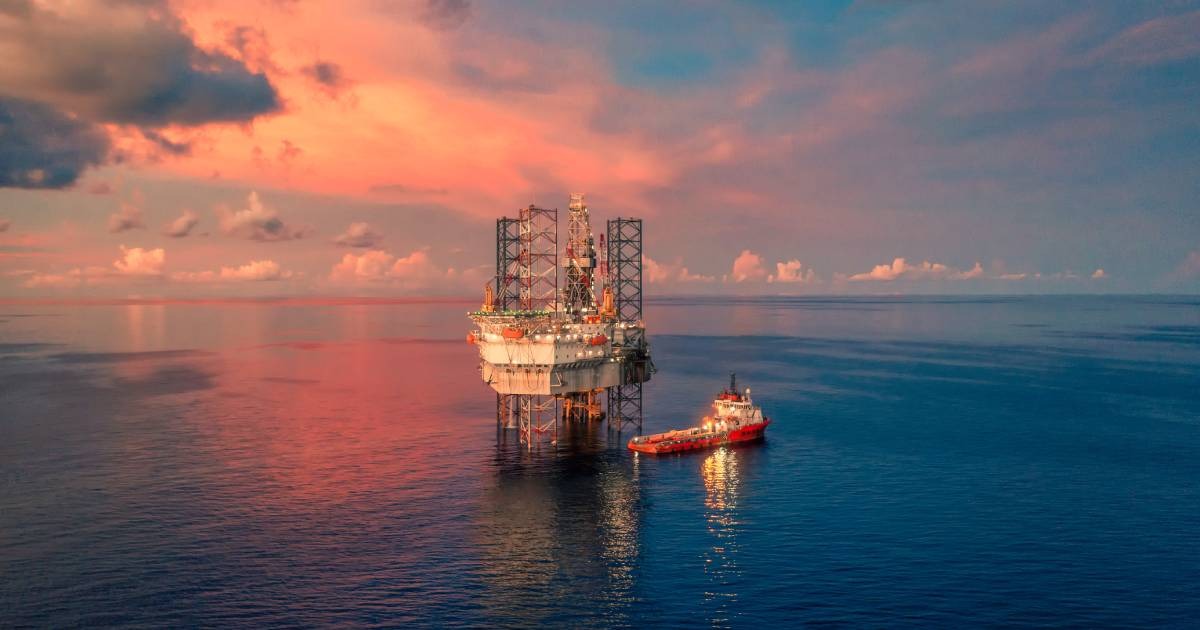In 2021, the US Navy selected IFS and Lockheed Martin to deliver intelligent ship and aircraft maintenance. It’s a massive project, supporting the Navy’s digital transformation as it pivots from multiple legacy systems into a single logistics information system.
The sheer orchestration of planning and executing the service, repair, and overhaul of thousands of assets, including aircraft, ships, and land-based equipment, is mind-boggling. When you think about it, everything the Navy does is grounded in logistics, especially considering that most activities—like offshore oil and gas operations—must be attended to at sea.
There are many parallels between the logistical challenges of an aircraft carrier and an oil and gas rig on the ocean, though obviously at a much smaller scale.
Both rely on asset-intensive equipment, access to critical supplies and parts, and the coordination of personnel—the backbone of the entire operation—to be where and when needed most. All while maintaining a safe and productive environment.
In this blog post, we examine how IFS Cloud Enterprise Asset Management (EAM) and other technologies support the complex logistics of an offshore oil and gas operation, including asset management, planning and scheduling, and the challenges in doing all of this on schedule and budget.
Enhancing real-time data with AI
Like the US Navy, offshore oil and gas operations rely on accurate real-time data to monitor asset performance. This data deliver essential insights, ensuring the health of assets, the potential for unanticipated downtime, and, most importantly—taking action before disruptions occur.

Artificial intelligence is critical in turning big data into smart data, helping inform business decisions while enabling predictive maintenance and other advanced asset management capabilities.
For example, digital twinning is an IFS capability used by the US Navy and the oil and gas industry. AI and machine learning analyze data from sensors and other sources to create a digital twin model that simulates the operational performance and conditions in real time. What-if scenarios are enabled to explore preventive maintenance planning and eliminate costly unplanned downtime.
Sustainability is another example. Like the oil and gas industry, the US Navy has climate and sustainability goals supporting accountability and public trust. AI analyzes environmental data from assets and other operational components, comparing the data with established sustainability objectives. IFS customers receive alerts from the IFS EAM system when emissions exceed established parameters.
Optimized planning and scheduling
1. Coordinating the work
With so many asset-intensive components, it is not humanly possible to prioritize the work, whether for regularly scheduled or urgent service.
IFS Maintenance Planning and Scheduling (MPS) leverages AI and automation to analyze operational data. The technology quickly identifies mission-critical activities and schedules the necessary resources and parts to resolve issues before productivity is disrupted.
With IFS, all aspects of planning and maintenance are digitalized for real-time oversight, allowing the operation to investigate immediate and what-if scenarios in real time while better managing field resources for improved productivity.
2. Coordinating the people
On average, a fully resourced aircraft carrier is home to as many as 5,000 personnel, while an offshore rig is staffed with about 200 workers. In either scenario, the organization relies on its people to maintain high operational readiness.
When something goes wrong, planning, locating, and scheduling the right people with the appropriate qualifications and experience is a mission-critical capability, as are the logistics of transporting them to the site with the proper tools and parts on hand.
IFS uses AI to automate workforce scheduling and planning activities. The right people are quickly identified and assigned, required parts and equipment are commissioned, and transport is organized. IFS coordinates these moving pieces in real-time, boosting first-time fix rates and minimizing unplanned disruptions.
3. Coordinating the assets and parts
Within the US Navy implementation, IFS consolidates project, asset, and parts data from all maintenance systems within a central repository that users view via an intuitive and mobile-friendly interface.
Offshore oil and gas operations benefit from the same efficiencies, including consistently accurate asset and parts inventory data. Service calls are streamlined, and asset uptime is optimized, with fewer unscheduled maintenance events. Workers attending onsite document faults, update parts inventories, and close service cases in real time.
Learn more
Specializing in asset-intensive industries, IFS works with oil and gas companies globally. On average, IFS oil and gas customers achieve a 22% increase in productivity.
From modernizing how the industry responds to workover and intervention events, predicting (and avoiding) output disruptions, and optimizing operational productivity every single day, IFS delivers asset management and logistics capabilities for your oil and gas operation.
SOURCE: MORTENSEN J. (2024, MAY 2) .OFFSHORE OIL & GAS: COMPLEX LOGISTICS, REAL-TIME OPERATIONS. IFS BLOG. https://blog.ifs.com/2024/05/offshore-oil-gas-complex-logistics-real-time-operations/

